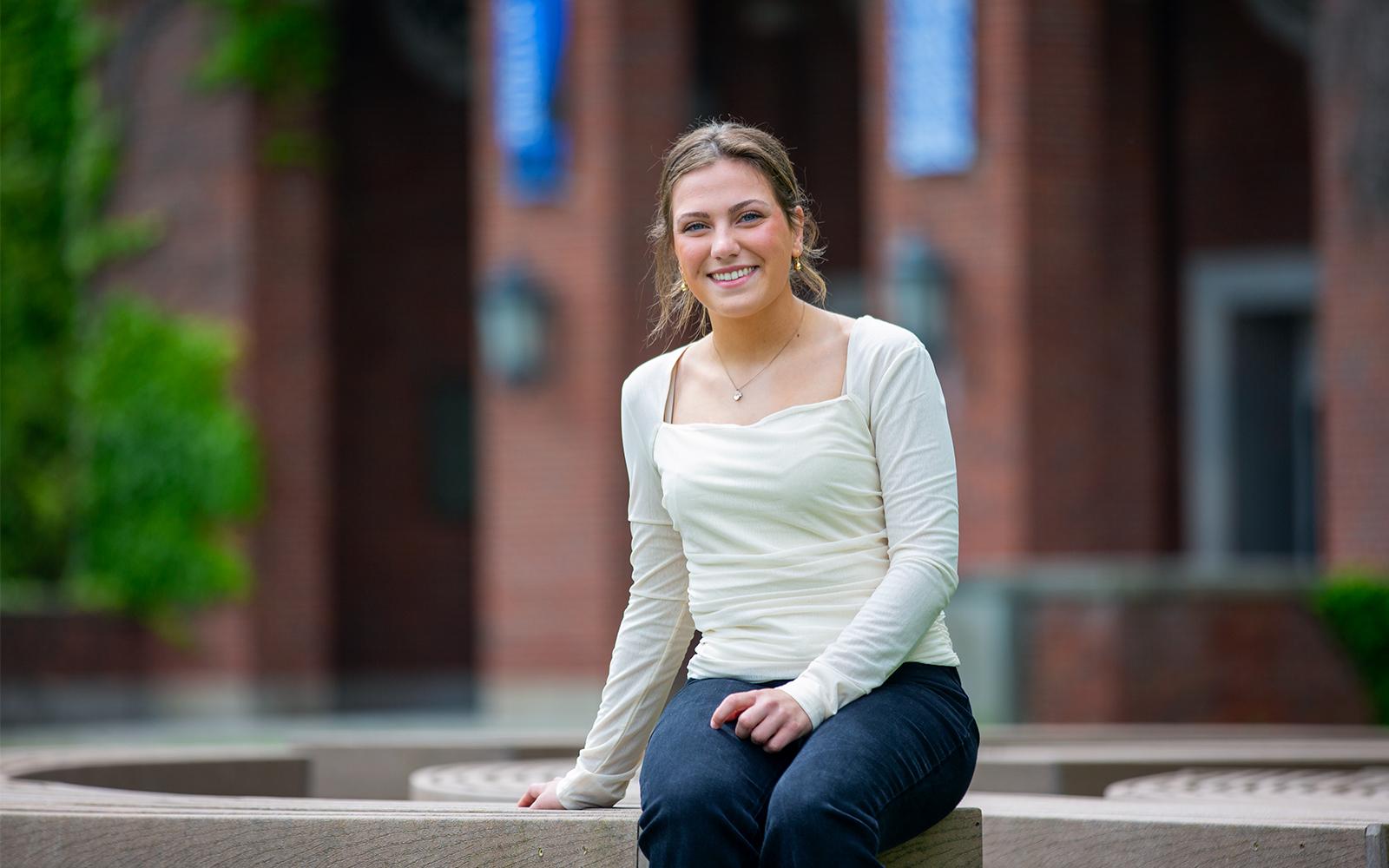Students Research the Tiny Source of Big Diseases
Jada West ’24 is looking for solutions to one of the Northeast’s biggest health problems—in some of the tiniest objects in the forest.
As summer rolls into full swing and hikers plunge into the Adirondack Mountains south of SUNY Potsdam, they begin inspecting boots, cuffs, and socks for ticks, hoping to avoid these annoying and pervasive vectors for Lyme disease. Driven by warmer winters, climate and habitat change, and potentially other factors, tick-borne diseases become more widespread across the East with every thaw.
Working closely with SUNY Potsdam faculty researchers and a team of undergraduates, West is testing a theory that could point to how and why Lyme, anaplasmosis, and babesiosis are creeping beyond traditional geographic boundaries, work that takes her outside the lab and into tick central.
Dragging a cloth through the woods at 15 sample sites, West and her team dredged up as many ticks as would hitch a ride—test subjects for surveys designed to measure tick and disease prevalence in relationship to how many small and furry creatures live nearby. The research used nonharmful traps and game cameras to record the abundance of deer mice, Eastern chipmunks and short-tailed shrews, which are known disease reservoirs.
“I tested for the relationship between small mammal relative abundance, the relative abundance of ticks, the percent of ticks positive for the three tick-borne diseases, and evaluated whether these patterns changed across rural, urban, and interface regions throughout Potsdam,” West said.
Dozens of ticks were sent away to a lab in Texas for testing. More study needs to be done this summer, but preliminary data indicates that the more these small mammals are around, the higher the percentage of ticks that test positive for Lyme. If the findings stand up to further study, they could be key in informing disease control measures and education efforts.
“This information not only benefits our scientific observations and curiosity. It will help SUNY Potsdam faculty and students to properly inform our community about ticks, their behaviors, interactions, and where they are most abundant.”

West presented her findings of this Kilmer Lab project at the Northeast Natural History Conference in Albany this spring. Co-authored by Assistant Professor of Environmental Studies Dr. Kate Cleary and Biology Professor Dr. Glenn Johnson, her poster, titled "The Wild Connection: Small Mammal Abundance as a Predictor for Tick-Borne Diseases," detailed key findings and pointed to more research ahead. The work helps West see a broader and often humbling picture of the human place in a natural world.
“Understanding nature, placing yourself in the midst of the ecosystem, observing some silent and not so silent interactions, is an honor,” she said.
West, who majored in Environmental Studies with a minor in Biology, took on the project as part of her Research in Environmental Studies course, joined by students Alyssa Card ’26, Annabell Smith-Goolden ’25, Lara Martin ‘27, and Paige Brown ’24. The work stems from a multi-year mammal diversity research project and is guided by Johnson and Cleary, with assistance from Dr. Bridget Amulike and Dr. Jessica (Rogers) Pearson from the Departments of Biology and Environmental Studies. The work is supported by the Kilmer Fund at the Lougheed Center for Applied Learning, the St. Lawrence River Research and Education Fund, and The Walker Fellowship.
West is excited to add more chapters to this unfolding detective story.
“A goal that I’ve had forever and will continue to have is finding a job that doesn’t feel like work—that I thoroughly enjoy,” she concluded. “This research is a perfect example of that goal.”
To learn more about the Department of Biology, visit: https://www.potsdam.edu/academics/AAS/depts/bio
To learn more about the Department of Environmental Studies, visit: https://www.potsdam.edu/academics/AAS/depts/EnvStudies
Article by Bret Yager. Photos by Jason Hunter
